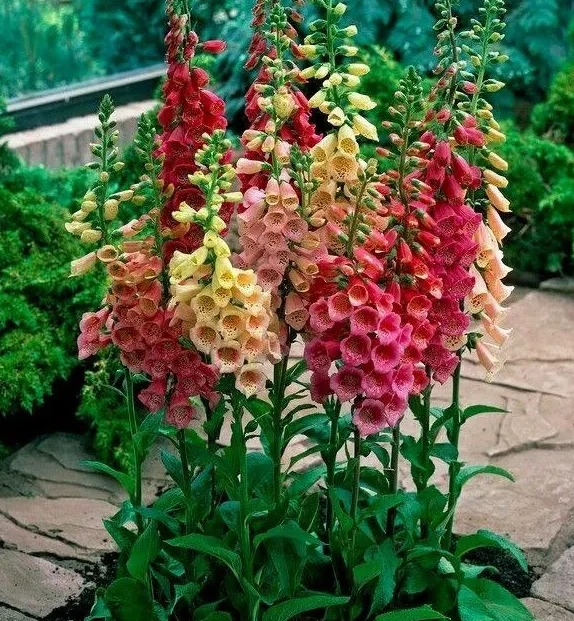
Description
There are a number of biennial, perennial, and shrub species in the Digitalis genus that go by the common name “foxglove,” but Digitalis purpurea, the common foxglove, is the most widely grown variety for gardens. The tall, thin common foxglove plant has tubular blooms that frequently have colorful speckles. It is a really eye-catching plant. This is a rapidly growing plant that often reaches the flowering stage two years before it dies. The plant only produces a basal cluster of foliage in its first year; but, in its second year, it produces stunning funnel-shaped pink, white, or purple flowers with white or purple dots lining their throats on stalks that grow to a height of 2 to 5 feet.
Habitat
Native to Europe, the Mediterranean, and the Canary Islands, foxgloves are grown for their showy flower spikes in a few varieties. Foxgloves grow in gardens and woodlands, as well as on waste grounds, moorlands, roadside verges, and coastal cliffs.
Uses
The leaves of foxglove (Digitalis purpurea L.) are often confused with those of borage (Borago officinalis L.), an herb that is traditionally used in cooking. Foxglove leaves contain cardiac glycosides, primarily digoxin, which makes them toxic to humans and potentially deadly if consumed.

Varieties
Popular varieties of common foxglove (Digitalis purpurea) include:
‘Goldcrest’ features dark green, lance-shaped leaves and yellow-peach-colored blossoms.
Bright, rosy-pink flowers abound on “Candy Mountain,” a cultivar that faces upward rather than downward.
The flowers of “Pam’s Choice” are white with burgundy throats.
The two-toned blooms in “Rose Shades” include spikes of white and rose blossoms.
A shorter variety with pink, white, and purple flowers is called “Foxy,” at 27 inches. Usually, in its first year, it blossoms.
In its first year of growth, ‘Camelot’ blooms pretty consistently, producing cream, lavender, rose, and white flowers on 28- to 40-inch stalks.
A well-liked set of 4- to 6-foot hybrids in various colors is called the “Excelsior group.” Zones five to nine are ideal for them.
Plant Care
- Light
Plant foxgloves in a spot that receives full sun to partial shade. Consider your climate when deciding how much sunshine should give this biennial. Give it some shade if you reside in the south; the plants won’t tolerate full sun. It can withstand little shade, but in the north, full sun is ideal for growth.
- Soil
Rich, well-draining soil with a pH of 5.5 to 6.5 is ideal for foxgloves.
- Water
Because foxglove might suffer from crown rot, make sure it has enough drainage. Don’t let the soil get too wet. Use a drip hose to give the plant a good watering if the top two inches of soil are dry or if there hasn’t been any rain for a week during the summer. Refrain from watering from above as this can promote fungus.
- Temperature and Humidity
Foxgloves may wilt in temperatures above 90 degrees Fahrenheit and often thrive in colder climates. When the temperature reaches between 70 and 80 degrees Fahrenheit, planted seeds will begin to sprout.
Although foxgloves are not sensitive to humidity, high levels of humidity can promote some fungal infections. Give them enough space to allow for proper air circulation.
- Fertilizer
For foxgloves, a 1-inch covering of well-decomposed mulch usually offers enough nutrients. Fertilizer is rarely necessary in healthy soil, and too much nitrogen can actually stunt the growth of flowers.
On the other hand, you can apply a tiny amount of slow-release 5-10-5 fertilizer in the early spring if your soil is extremely poor. To aid with its settling, distribute it throughout the plant and then water it. Fertilizer can burn plants, so keep it away from the leaves.
Table





